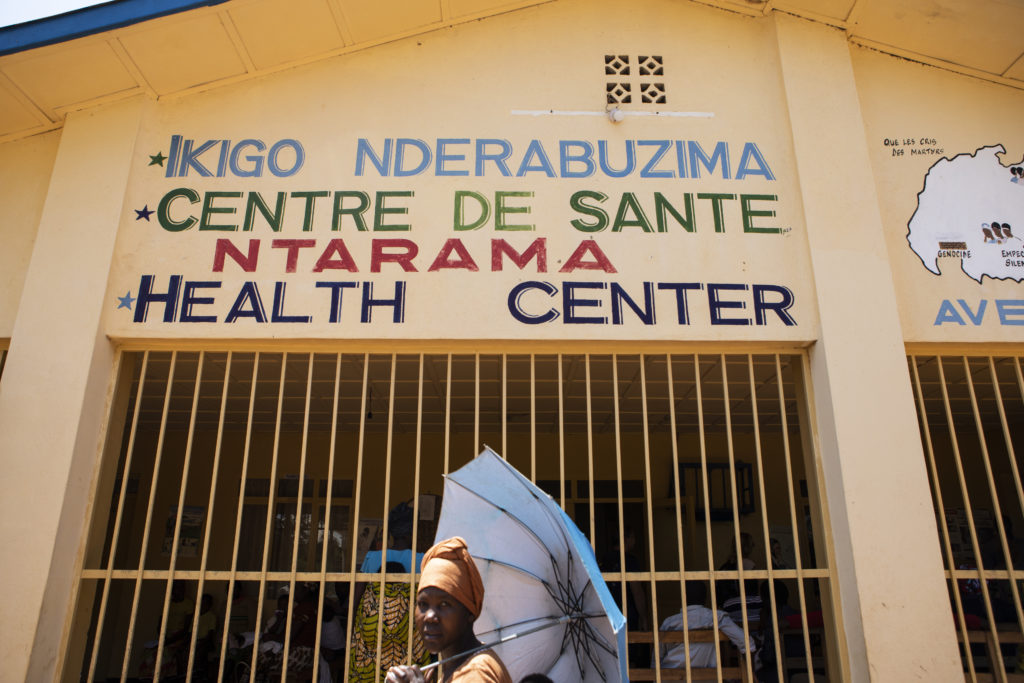
Further to the publication of the new Strategic Plan of Survivors Fund (SURF) for 2024 to 2028, we will be publishing several posts to provide more context of our work – and implications for the the survivors of the genocide against the Tutsi in Rwanda which we support.
Health
The health sector in Rwanda has undergone significant transformation, particularly in the aftermath of the 1994 genocide. The country’s health infrastructure and system were severely ravaged during the conflict, necessitating comprehensive rehabilitation and restructuring. The Rwandan government, with support from various international organizations and partners, has invested in rebuilding and fortifying the health sector, aiming to enhance accessibility, quality, and sustainability of healthcare services.
The healthcare system in Rwanda is organized across different levels, encompassing community, primary, secondary, and tertiary care. At the grassroots, community health workers (CHWs) play a pivotal role in providing basic health services, conducting health education, and facilitating access to higher levels of care. Health centers, district hospitals, and referral hospitals form the successive tiers of the system, each offering escalating levels of specialized care.
A notable feature of Rwanda’s health system is its commitment to universal health coverage. The community-based health insurance scheme, commonly known as “Mutuelles de Santé,” has been instrumental in amplifying access to healthcare services across the population. This scheme, alongside other insurance options, has significantly augmented healthcare utilization and attenuated financial barriers to access.
Since 2011 premiums have varied on a sliding scale according to wealth, with the poorest citizens entitled to free health insurance (through a Rwf 2,000 subsidy paid by government) and the wealthiest paying premiums of Rwf 7,000 per adult. As of 2019, around 90% of the population is covered by the scheme.
Over the past decades, Rwanda has registered notable improvements in various health indicators, such as reducing child mortality, enhancing maternal health, and mitigating the impact of communicable diseases like HIV/AIDS, malaria, and tuberculosis. Various national programs, supported by international partnerships, have targeted these health domains, implementing strategies to reduce incidence and enhance management.
Annual incidence of HIV among adults (defined as those aged 15-64 years) in Rwanda was 0.08%. This corresponds to approximately 5,400 new cases of HIV annually among adults in Rwanda. Prevalence of HIV among adults in Rwanda was 3.0%. Young women ages 15 to 24 are twice as likely to be infected with HIV as young men in the same age group. While stigma continues to be a problem for people living with HIV/AIDS, the situation is slowly improving due to good information sharing at all levels about HIV/AIDS.
Strengthening the health workforce has been a crucial component of Rwanda’s health system development. Investments in education and training for various health professionals, alongside initiatives to enhance retention and optimize distribution, have been pivotal. Rwanda has also engaged in partnerships, such as the Human Resources for Health Program, aimed at bolstering the capacity of its health workforce.
Despite the significant advancements, challenges persist in Rwanda’s health sector, such as ensuring equitable access to quality services across all regions, addressing non-communicable diseases, and sustaining healthcare financing. The government continues to navigate these challenges, exploring innovative approaches and partnerships to enhance the health system’s resilience and responsiveness.
Implication for survivors and related vulnerable groups: Access to healthcare for survivors has improved on a par with the rest of the wider population, in particular helped by several clinics run by SURF’s local partner organisations to provide general community healthcare. However, there are still issues related to poorer survivors having difficulty to afford Mutuelles de Santé as well as the health challenges that many older survivors face today.
